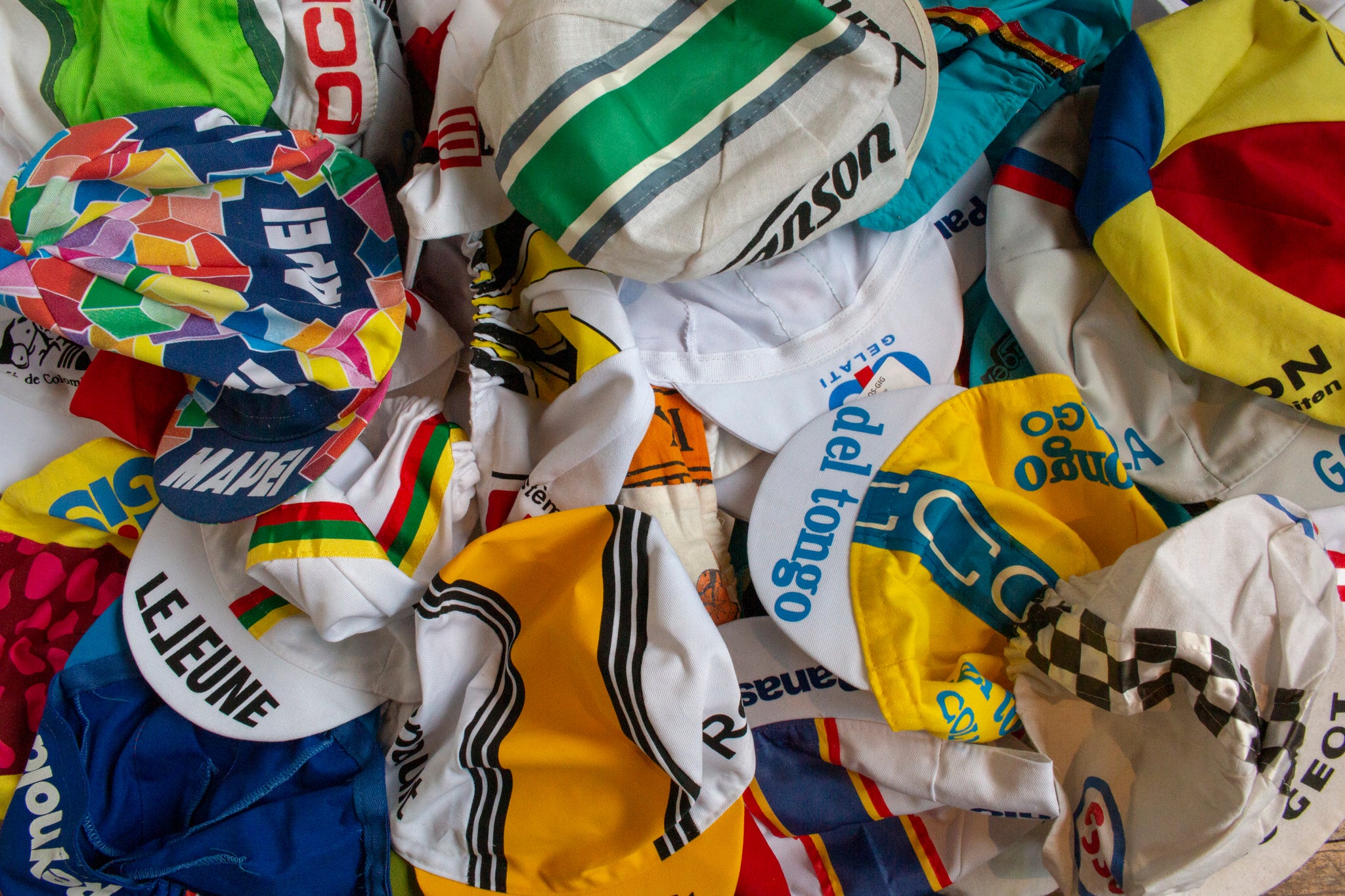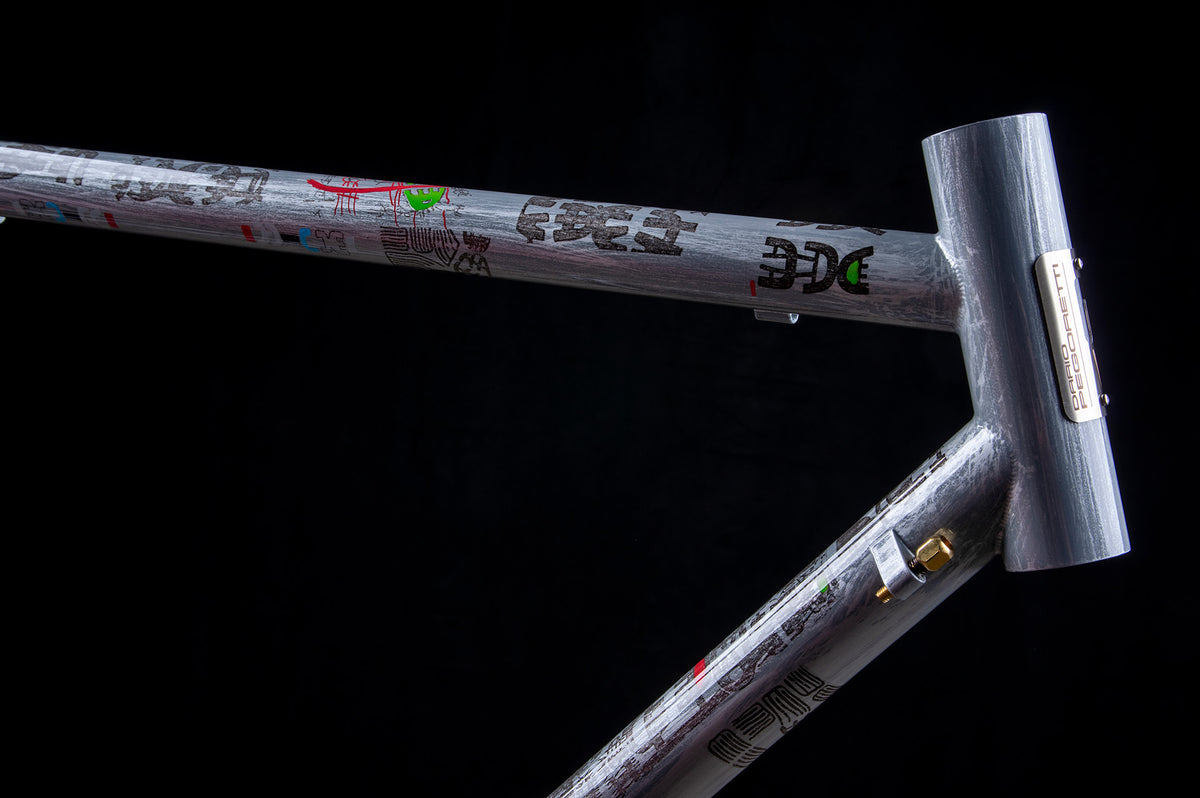
Caps Not Hats! The Retro Cyclist's Pièce de Résistance...
Why do cyclists wear those funny little hats?
Well, first of all it’s caps not hats, apparently there is a difference. Secondly, they are actually an easily available and versatile piece of kit! The peaked cotton cycling cap offers the wearer some protection from the cold, from the rain and sun getting in their eyes (and from sunburn in the case of those who are follically challenged!). They are snug so won’t blow off if you don’t wear a helmet, and are thin so will fit underneath a helmet if you do.

Caps also help you to show your allegiance to a brand or team, and complete an outfit.
Not only are they practical they are a great way of adding a splash of colour to your outfit, or showing your allegiance to a particular brand or team. Through the 1960s, 70s and 80s the cap was ubiquitous in the professional peloton and because of the way riders were photographed the cap became prime advertising space. In much the same way as Formula One drivers are contractually obliged (really!) to wear a hat with their sponsors logo on after a race, the cap became de rigeur for riders and all the brands and teams that produced them.

Eddy Merckx rocking his cap in an old school way at the Tour de France. Image courtesy of Le Coq Sportif
This passed down to amateurs and club riders keen to emulate their heroes, the low cost and high visibility of a cap was a great way to fit in and show you were one of the group.
But how do you wear a cap?
Traditionally, before helmets were required, the cap was worn high up on the head, with the peak pointed up at the front, or reversed with the peak pointing backwards. Some riders had a manner of wearing their cap that became part of their look; the legendary Miguel Indurain wore his high up but peak down and Tom Simpson's always seemed to be at a slightly jaunty angle.

Miguel Indurain always wore his cap high and with the peak down, and he won a lot of races. Image courtesy of capovelo.com
 Berly Burton often rode capless, but alongside her we see the cap worn underneath an old school 'hairnet' helmet c.1967. Image courtesy of Rouler.
Berly Burton often rode capless, but alongside her we see the cap worn underneath an old school 'hairnet' helmet c.1967. Image courtesy of Rouler.
 Tom Simpson in 1964, barely wearing his cap. Image courtesy of The Guardian.
Tom Simpson in 1964, barely wearing his cap. Image courtesy of The Guardian.
As with everything the cycling cap has also had its 15 minutes of fame outside of it's natural world - it was a key part of Wesley Snipe's look in White Men Can't Jump and it returned to the catwalks in the mid 2010s thanks in part to the urban fixie crowd.
 Could it get more 90s? Image courtesy of The New York Times.
Could it get more 90s? Image courtesy of The New York Times.
Don't let that put you off though, the humble cap is practical and is a knowing nod to other bike nerds, its says ‘I’m a cyclist’ without having to actually say it.
If you enjoyed this article please don't forget to share it around 😊
Leave a comment
Comments will be approved before showing up.
Also in The Journal

Eddy Merckx - The Cannibal

Art & Bicycles – Dario Pegoretti - An Italian Master


Pedal Pedlar
Author